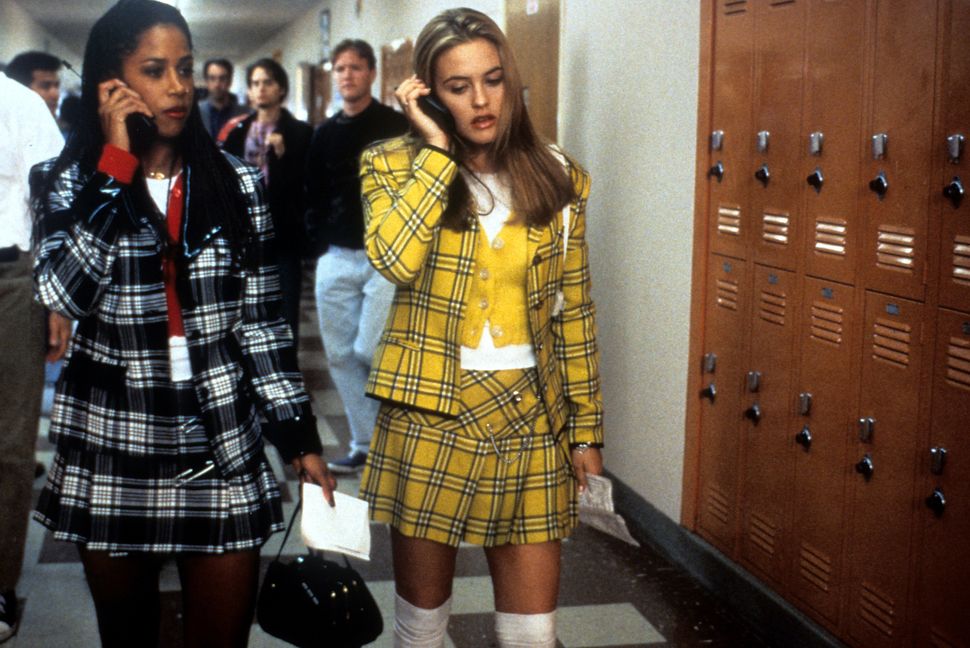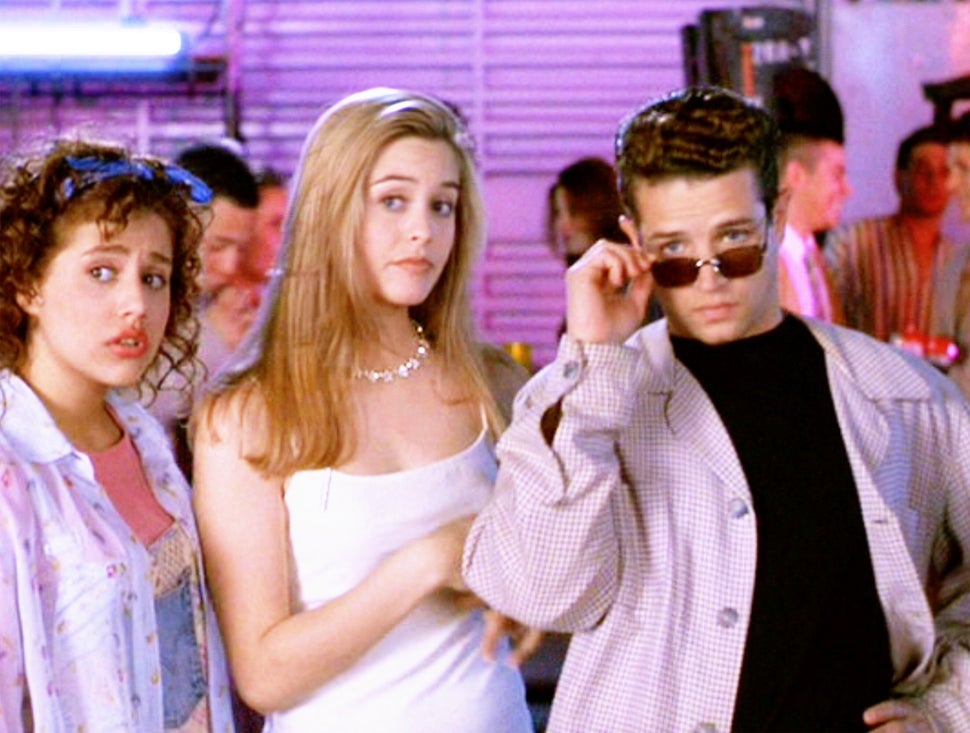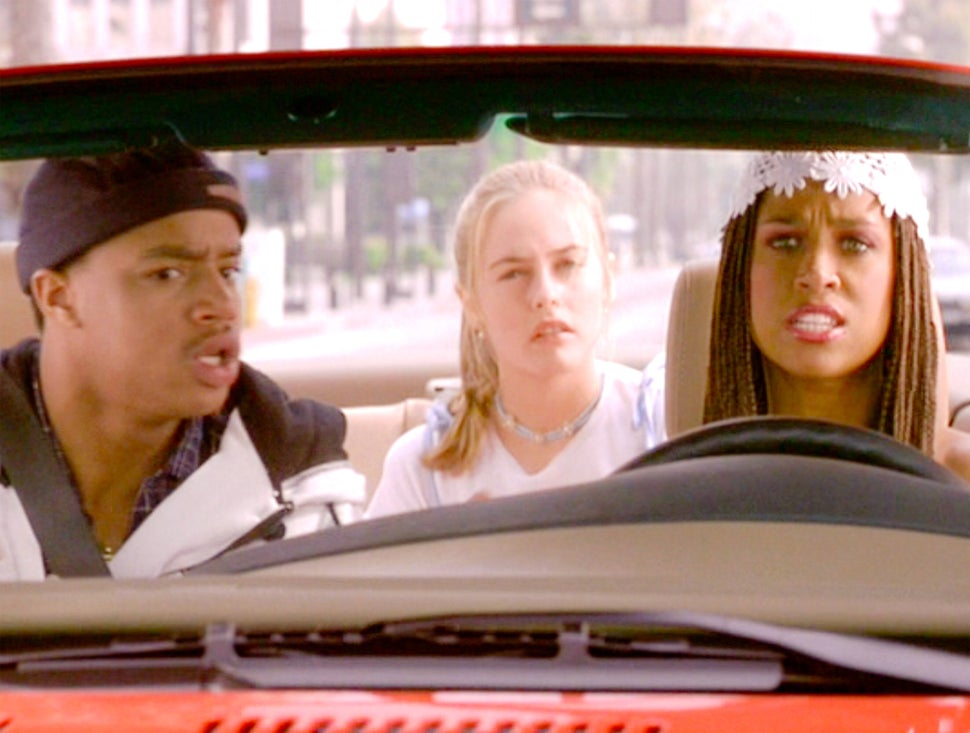Every few years, people claim teen movies are dead. Then something comes along that supposedly resuscitates the genre, spawning copycats and spinoffs and beneficiaries galore. Perhaps no film embodies this funereal cycle more than “Clueless,” a masterpiece that challenged any snob-and-a-half who thought adolescent frolics made for substandard cinema.
When “Clueless” arrived 25 years ago, on July 19, 1995, the teen-happy ’80s had fully receded, taking with them the “Risky Business” wannabes and the John Hughes flourishes. What followed in Cher Horowitz’s wake was arguably the greatest teen-movie crest in Hollywood history, lasting through the mid-2000s and making “Clueless” a phenomenon that united multiple generations. It was written and directed by a Boomer, marketed to Gen X, made a contemporary classic by millennials and transformed into a point of nostalgia by Gen Z.
There’s no single explanation for how “Clueless” became “Clueless,” aside from the oversimplified fact that it is the best. But its two-decades-and-counting ascendancy helps to clarify why the teen movie sometimes seems endangered: Even when they’re good, they’re rarely this good. In modernizing the matchmaking antics of Jane Austen’s “Emma,” Amy Heckerling sought not to capture the precise lingua franca of ’90s kids but to create an idiosyncratic ethos that matched the general teen experience. She understood that the audience she was serving had been baptized by MTV and a thriving magazine trade, making them exceedingly literate in all things pop culture. She also knew that, even if fads come and go, American teens share commonalities unique to their peer group, region and economic background. One generation’s “Baldwin” is another generation’s “bae.”
In surveying the development route that “Clueless” took, we can glean insight into its longevity. Heckerling had directed one of the 1980s’ signature teen hits, “Fast Times at Ridgemont High,” which explains why executives at 20th Century Fox suggested she write a script about a young in-crowd. Resistant to doing another teen picture, she agreed only if she could make it a tongue-in-cheek satire. Out came a television pilot. She named the series “No Worries.”

Fox apparently didn’t like it. Heckerling’s agent, however, saw potential, encouraging her to take what she had — the story of a preppy, effervescent 16-year-old — and turn it into a feature. So she revised the script, incorporating elements of “Emma” and setting it in the ritzy playground of Beverly Hills, California. Her heroine became the super-hip Cher (Alicia Silverstone), flanked by her fashion-forward BFF Dionne (Stacey Dash) and makeover patient Tai (Brittany Murphy). Cher would make it her mission to set up two lonely teachers (Wallace Shawn and Twink Caplan), eventually realizing she, too, is in love. The object of Cher’s affection is her former stepbrother (Paul Rudd), an intellectual college stud who needles her materialism.
Fox deemed Heckerling’s overhaul too feminine. So-called conventional wisdom told Hollywood that women weren’t commercially viable. The industry had long believed that girls would see movies about boys but boys wouldn’t see movies about girls — and the same idea applied to grown heterosexual men, who often carried their juvenile habits into adulthood. The ’80s and early ’90s were saturated with comedic blockbusters about dim-witted dudes (“Porky’s,” “The Naked Gun,” “Bill and Ted’s Excellent Adventure,” “Dumb and Dumber,” “Billy Madison”), accelerating this attitude about what’s considered bankable.
In keeping, Fox asked Heckerling to give the male characters more screen time, making it an ensemble piece. When she declined, the studio dropped the project — a decision The New York Times called an “embarrassment” a year later when “Clueless” found success.
Every movie has an origin story that informs its shelf life. Landing the right distributor at the right time can be make-or-break. The Fox brass’ sexist response allowed “Clueless” to find a proper home at Paramount Pictures, where chairwoman Sherry Lansing gave it a swift green light. Heckerling also handed Lansing a copy of Aerosmith’s video for “Crazy,” which introduced Silverstone in a schoolgirl outfit; the director had already pinpointed her lead actress. It made sense, then, for “Clueless” to open with what looked like a music video — or, as Cher calls it, a Noxzema commercial — set to Kim Wilde’s catchy “Kids in America.”

What neither Fox nor Paramount could have foreseen was that 1995 would be a banner year for women at the multiplex. “Pocahontas,” “Dangerous Minds,” “While You Were Sleeping,” “Waiting to Exhale” and “The Bridges of Madison County” undercut any numbskull who thought the American public would automatically snub films in which men aren’t front and center. “Clueless” opened at No. 2 — “Apollo 13” had been indomitable — but planted itself more firmly in our collective memory than many of the year’s male-driven vehicles (“Die Hard with a Vengeance,” “Congo,” “Waterworld,” “First Knight”).
Heckerling had achieved the sort of commodity that befuddles self-righteous cinephiles trained to assume gravity is derived from austerity. You know those dense philosophical movies that some people supposedly just don’t “get”? “Clueless” was one of them, a clever jaunt that disguised its meandering intelligence in pop panache. What is Cher’s “May I please remind you it does not say ‘R.S.V.P.’ on the Statue of Liberty” monologue if not a speech about political refugees, as the internet pointed out in 2017 when Donald Trump banned asylum seekers from seven predominantly Muslim countries?
The reviews were broadly favorable, yet many contained an air of dismissal. San Francisco Chronicle critic Peter Stack, for one, called the movie “silly, throwaway summer entertainment.” That was way harsh, guy. The Los Angeles Times’ Kenneth Turan seemed stunned to admit the film “turns out to have more to it than anyone could anticipate,” as if the highs and lows of high school aren’t downright Shakespearean. “Clueless” is about self-worth and companionship — hardly trivial topics.
Paramount and MTV share a parent company in Viacom, leading to a synergy that helped align the film’s aesthetic spirit with its target audience. For weeks, “Clueless” was heavily promoted on the network, which was operating at the height of its tastemaking powers. Advertisements featuring Silverstone and Dash in character premiered in conjunction with Silverstone’s appearance at the 1995 MTV Movie Awards, where one year earlier she’d won Best Breakthrough Performance for the erotic thriller “The Crush.” On July 14, less than a week before “Clueless” opened, a starry-eyed Silverstone co-hosted a beachfront special celebrating the release. Co-stars Brittany Murphy and Donald Faison appeared on the program, as did up-and-coming celebrities like Jennifer Aniston, David Arquette, Jared Leto, Marcia Cross and Mark Wahlberg, the latter of whom Cher references by his rap moniker, Marky Mark.
“There hasn’t been a film in the marketplace for a long time for this audience: young females, 8 to 20 years,” Paramount vice chairman Barry London said at the time. “Once we saw the playability of the movie, we knew we had the potential to be the true sleeper of the summer.”

London was right, even if the “Clueless” grosses didn’t predict the mainstay it would become. The film collected $95.2 million in today’s money, ranking at No. 25 on 1995’s box-office returns. In such prehistoric times, theatrical footprints only told half the story. Studios relied on home rentals and broadcasting licenses to keep cash flowing. That’s when “Clueless” went from summer sleeper to mega-smash. According to Billboard charts, the VHS — released in December 1995, right in time for Christmas — remained one of the 30 most-rented titles for five long months, sometimes outgrossing newer movies like “The Usual Suspects” and “The Net.” It just so happens that Viacom had acquired Blockbuster in 1994 for a reported $8.4 billion.
Almost exactly two years after “Clueless” hit theaters, it premiered on HBO during the Fourth of July weekend, when people might be inclined to gather around TV sets with some sort of herbal refreshment. By then, Heckerling had expanded the “Clueless” universe to include novelizations (she didn’t write them) and a TV series of the same name that featured much of the supporting cast. (“Are You Afraid of the Dark?” actor Rachel Blanchard took over for Silverstone, who was minted Hollywood’s next big-screen star and given a roughly $10 million contract from Columbia Pictures. Silverstone also presented an award at the 1996 Oscars, where she was introduced as “the star of ‘Clueless.’”) The “Clueless” series lasted three seasons and begat crossover episodes with “Moesha” and “Sabrina the Teenage Witch,” proving how well Heckerling and her team understood the entertainment business of the late ’90s.
Beyond all this brand-building, what made “Clueless” an intergenerational touchstone is the blueprint it advanced for teen-girl protagonists. Heckerling had likened Silverstone to Marilyn Monroe and Goldie Hawn, blondes whose charisma let male and female viewers graft onto them whatever they wanted. Cher enjoyed estrogen-coded activities like shopping and calorie-counting without yet grasping that the world would see her as superficial, hence the title. She gets the guy at the end, but only as a result of broader self-discovery. What Cher really learns is that she needs to look beyond her own preoccupations; she needs to value others’ perspectives and care about what’s going on around her. Only then can she know herself.
There are traces of Cher — shrewd, articulate, underestimated — in Kat Stratford (Julia Stiles in “10 Things I Hate About You,” inverting the trope via inflated pretentiousness), Nicole Maris (Melissa Joan Hart in “Drive Me Crazy”), Torrance Shipman (Kirsten Dunst in “Bring It On”), Cady Heron (Lindsay Lohan in “Mean Girls”) and Olive Penderghast (Emma Stone in “Easy A”). Without Cher Horowitz, there would be no Elle Woods. Granted, none of them (except maybe Elle) dress as distinctively, which meant Cher’s wardrobe, particularly her yellow plaid coordinates, was the one that inspired Halloween costumes.
(Naturally, there’s a different essay to be written about the whiteness of it all. Hollywood certainly wasn’t creating equivalent roles for women of color.)

In the intervening years, pop culture has kept the “Clueless” enthusiasm alive. In 2005, we got a new DVD dubbed the “Whatever! Edition.” That same year, a University of Oregon professor added the film to her media-aesthetics curriculum. A Blu-ray arrived in 2012, as did a cast reunion facilitated by Entertainment Weekly. Iggy Azalea and Charlie XCX recreated imagery in the video for their chart-topping 2014 single “Fancy,” portraying Cher and Tai, respectively. Jen Chaney’s “As If!: An Oral History of Clueless” was published in 2015. In 2018, “The Unauthorized Musical Parody of Clueless” opened in Los Angeles. Later that year, “Clueless” became a Broadway musical co-written by Heckerling, who incorporated “Kids in America” and other highlights from the original soundtrack. At that point, it was officially uncool to write off the movie. Nowadays, “Clueless” is a common offering on Netflix, the Blockbuster of the 21st century, where Gen Z has discovered it.
In 2019, CBS TV Studios — another Viacom subsidiary — announced a small-screen reimagining centered on a present-day version of Dionne. Because Paramount owns the rights, Heckerling reportedly learned of the remake when it was announced to the public. The news included a noxious stew of internet-ready buzzwords. According to Deadline, “It is described as a baby pink and bisexual blue-tinted, tiny sunglasses-wearing, oat-milk-latté- and Adderall-fueled look at what happens when the high school queen bee Cher disappears and her lifelong No. 2 Dionne steps into Cher’s vacant Air Jordans.”
Maybe the show will surprise us when it comes to fruition, but that synopsis seems to misunderstand what makes “Clueless” so wonderful. It reads like a desperate quest for relevance. The magic of “Clueless” is that it didn’t try hard to speak for one particular era. The vernacular, the clothes, the technology — they were of their time, sure, but always in a way that remained applicable to future generations who might experience the world differently. That’s what the greatest teen flicks do: delineate the universality of adolescence across time. Anything less is totally buggin’.
Calling all HuffPost superfans!
Sign up for membership to become a founding member and help shape HuffPost’s next chapter
Credit: Source link